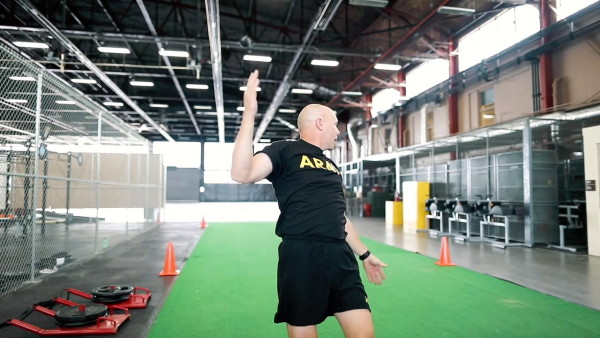Changes to the Army Combat Fitness Test were announced on Friday as the service prepares to move into the second phase of implementing the new standard test.
Throughout FY2019, 63 battalions — around 17,000 soldiers — took the ACFT during its initial implementation phase. Leaders compiled data through those tests, which is what has brought about the changes going into FY2020.
Beginning on October 1, the Army will move into phase two. Per the Army, all soldiers will begin taking the adjusted ACFT, though they won’t be held to any of the standards. The goal is to gather more data, so that leaders can “make even more informed decisions,” Maj. Gen. Lonni Hibbard, commander of the U.S. Army Center for Initial Military Training (CIMT), said in the press release.
If you start basic on October 1, however, you’ll be taking the ACFT as a graduation requirement; Hibbard said in the release that soldiers graduating Advanced Individual Training, One Station Unit Training, Warrant Officer Basic Course, and the Basic Officer Leader’s Course are going to take the ACFT before graduating in order to “train realistically and develop physically in the earlier phase in their career.”
Testing standards for soldiers will depend on their military occupational speciality; per the Army’s release, each MOS will get one of three color codes “to correlate with the frequency of high physical demands within their respective careers.” Those three categories will determine passing scores.
Not including the prep and cool-down, the test takes approximately 35 minutes to complete, along with 16 minutes of rest time, CIMT Sgt. Maj. Edward Mitchell said Friday on a live-streamed Facebook Q&A with Sergeant Major of the Army Michael Grinston, and Training and Doctrine Command Sgt. Maj. Timothy Guden.
One of the big changes announced on Friday is the substituting of the hand-lift pushup with the arm extension pushup.
Dr. Whitfield East, director of West Point’s Department of Physical Education, said in the press release that it was difficult to grade the hand-lift, and that instead of lifting their hands, soldiers “hyperextended their lower backs and lifted their chests off the ground.”
There’s been concern about the test because of select preliminary results that were posted on social media last week, which showed a 70% pass rate for men who took the test, and a startling 84% fail rate for women. The posting compiled results of 3,206 soldiers — 2,849 men, and 357 women.
Megan Reed, a spokeswoman for the CIMT, told Task & Purpose that the leaked scores were not aggregated by CIMT “to produce official results.” Army Times reports that the screen-shot of what was posted came from Army Forces Command and compiled test results of 11 of the 63 battalions that were tested this year.
Guden said on the Facebook Q&A on Friday that of the 63 battalions tested, the leg-tuck was the hardest event. He’s not wrong — though it appears to disproportionately impact female soldiers. In the results posted online, 72% of women failed the leg-tuck event.
“For soldiers that are small in stature and don’t have upper body strength that can sustain themselves during one or two pull-ups…the leg tuck is going to be a challenge,” Guden said on Friday. “I suggest you get on the bar now and start developing that arm strength and that grip strength in preparing for the leg-tuck.”
“It is vital to emphasize that the first record ACFT is at least 13-14 months away,” Reed told Task & Purpose. “The Army will use this year to teach, train and mentor troops on how to prepare for the ACFT and therefore prepare for their combat mission. When training is complete and units have adapted to the new test, we expect performance rates to be similar to the current test.”
Hibbard told Army Times that the scores posted on social media were “a snapshot” from those units.
“I cautioned the Army senior leaders when I did a brief with the vice three weeks ago because when we started aggregating the data, people are going to make conclusions. The problem is, most of the time, when they did the diagnostic test, this is the first time they’ve ever done it.”
Another concern that was raised during the Q&A on Friday was postpartum testing requirements. When it was brought up, Grinston said he’d been asked about it “three times, probably in the last week,” but that they “still have to do the analysis” to decide how soldiers who previously gave birth will be tested.
“Right now, it’s still going to be six months, but we still have a year to actually determine what that’s going to be. Does that regulation stay the same? … We’re going to make adjustments again until we get to October of next year because we need the time to see do we have the right timeline.”

























